Where should keen photographers head to in Oslo for the best shots? Find out in this visual guide to the Norwegian capital city.
Whether you're drawn to dramatic cityscapes, striking architecture, or tranquil natural scenes, Oslo offers countless opportunities for unforgettable photos. From sculpture-filled parks and riverside walks to sweeping views from forested hills, Norway’s capital provides a diverse and ever-changing backdrop for your camera.
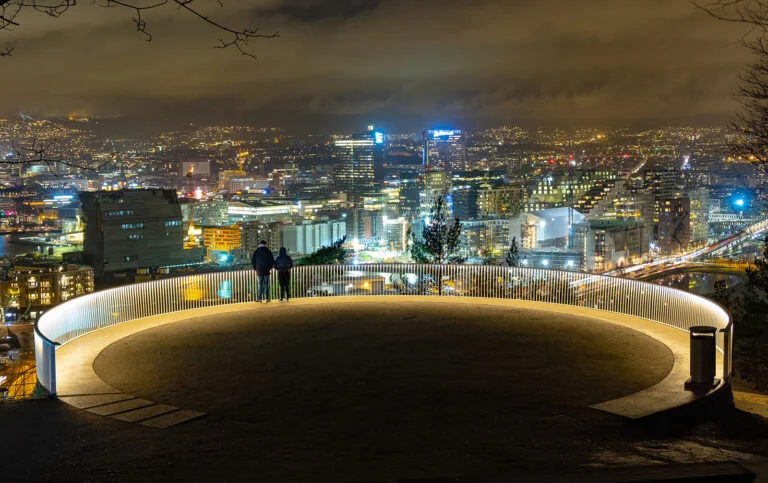
With so many potential spots to choose from, it can be hard to know where to begin. Planning a photo tour is not just about capturing the perfect shot. It also helps you explore Oslo with fresh eyes, noticing details and perspectives you might otherwise overlook.
If you're looking to sharpen your photography skills or simply want to return home with a collection of striking images, this guide will help you get started.
We’ve selected 15 of the most photogenic places in Oslo. Some are iconic landmarks, others are lesser-known gems. All are well worth a visit with your camera in hand. Let’s dive in.
Ekeberg Park
Home to one of the newest sculpture parks in Oslo, Ekeberg remains unknown by many tourists. That's despite the fact the park is the inspiration behind the iconic painting The Scream!
The entire park is vast and offers several points with terrific views over the city and the Oslofjord. While the sculptures are not to everyone's taste, the views from the park definitely are. Two particularly recommended spots for photographers are:
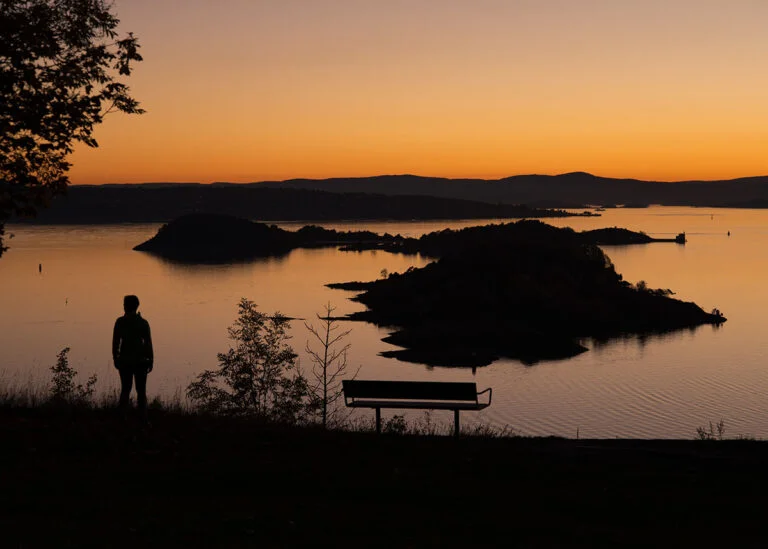
The Munch Viewpoint: Located along Valhallveien, this spot is believed to be where Munch conceived The Scream, offering a dramatic perspective of the city that inspired the artwork.
The Circular Concrete Viewpoint: Situated near Ekebergrestauranten, this modern platform provides a sweeping, elevated panorama of Oslo, especially captivating during sunset.
Holmenkollen Ski Jump
Over on the other side of the city, line one of the T-Bane takes you up to two of the best viewpoints in the entire city. Firstly, the Holmenkollen ski jump, which offers a great view over Oslo, even if you don't take the trip to the top of the tower.
But you should! The lift to the tower does cost money, but the panoramic views are simply stunning.
The view from the top will surely make you wonder what possesses a ski jumper to do what they do! But visiting the ski jump isn't just about the view.
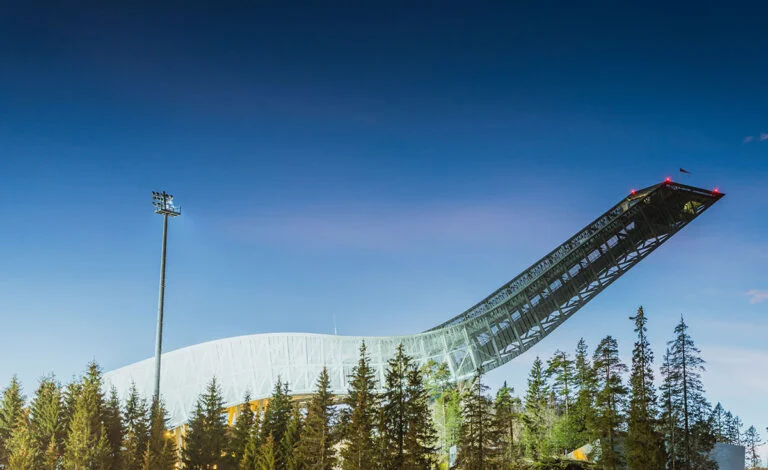
The structure itself is remarkable and worthy of many memorable photos. Opened in 2010 at a cost of NOK 715 million, the hill hosts many FIS World Cup events.
The surrounding arena hosts cross-country skiing and biathlon events, while the recently renovated ski museum is a must for sports enthusiasts.
While you're at Holmenkollen, don't miss another couple of photogenic spots. Holmenkollen Chapel was rebuilt in 1996 following an arson attack four years previous, while the distinctive facade of the Holmenkollen Park Hotel has been meticulously maintained over the years.
Frognerseteren
At the end of line 1, Frognerseteren station serves as one of the main gateways to the trails of Nordmarka. But just a few minutes walk down the hill brings you to the spectacular mountain lodge of the same name.
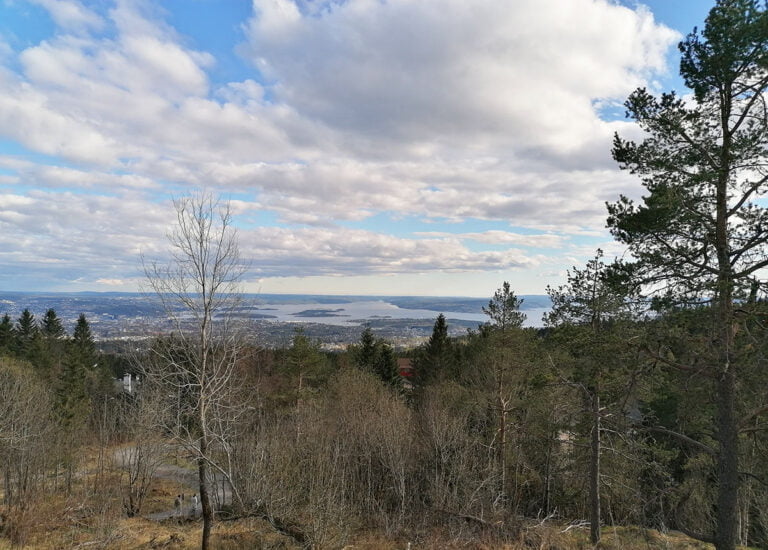
The lodge's atmospheric interior is home to a restaurant and cafe. In the summer, hikers often buy a coffee or a cocoa and step outside to enjoy the view of Oslo.
In the winter, the area is busy with cross-country skiers and people preparing to start the Korketrekkeren toboggan run.
Akershus Castle and Grounds
Since the Middle Ages, Akershus Castle and Fortress has been a landmark of Oslo. The buildings remain one of Oslo's best historic spots for photographs, but the grounds also offer wonderful views across to Aker Brygge and out into the fjord.
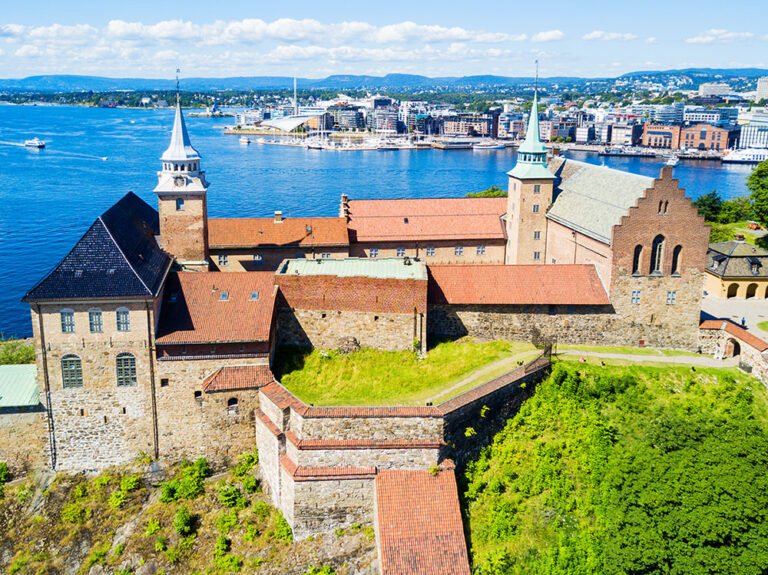
Originally built to protect the city and provide a royal residence, the castle has also been used as a military base and prison. This means there's all sorts of interesting architectural features to inspire your photography.
The relatively simple castle was expanded by Christian IV of Denmak-Norway during his 59-year-long reign. He transformed the castle with bastions to the north, east and southeast and expanded the grounds.
Vigeland Sculpture Park
Of course, no list of Oslo photo spots would be complete without Scandinavia's most famous sculpture park. The number one free tourist attraction in Norway is visually stunning no matter what time of year you visit.
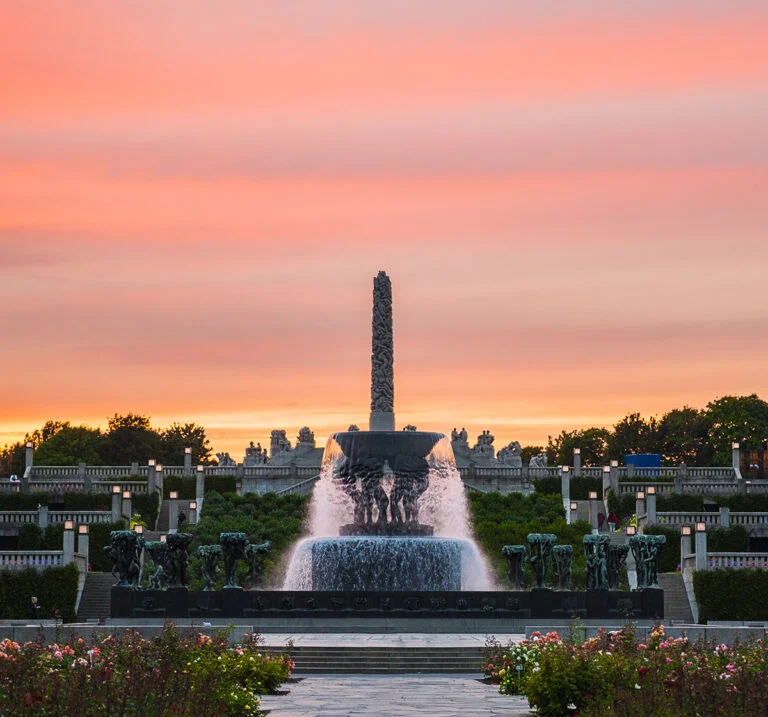
Located in Frogner Park near Majorstuen, Vigeland Sculpture Park is the life's work of sculptor Gustav Vigeland. More than 200 sculptures by Vigeland in bronze, granite and wrought iron are on display.
The best photo opportunities include the fountain (when it's on) and the 55-feet-high monolith designed by Vigeland and completed by three masons over a period of 14 years.
The park is also a popular place to shoot video. Check out our walking tour of the park from the summer of 2021:
The public park is open year-round with no entry fee. Visiting the park in the winter is well worth it for less crowds and a different atmosphere.
Royal Palace Gardens
Oslo's Royal Palace attracts many tourists through the year. But not all of them take the time to walk behind the palace and into the gardens, essentially a public park.
Since 1840, the gardens have been a popular recreational area for the residents of Oslo. Large trees, well-kept lawns and picturesque ponds promote relaxation.
Since 2016, a new fairytale-inspired sculpture park opened within the gardens, making them more of a tourist attraction.
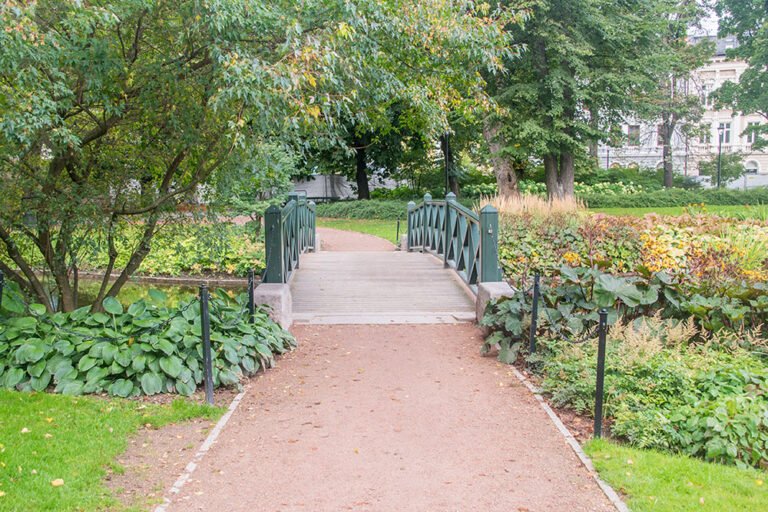
Named after the future Queen of Norway, Princess Ingrid Alexandra, the park was the result of a nationwide competition among schoolchildren.
Other sculptures dotted around the gardens include a small bronze deer, usually found standing on a small island in a pond in the ‘Queen's Park', located at the southern end of the gardens.
Akerselva River
The Akerselva river splits Oslo in two. Walking along the river is one of the first things I did when I moved to Oslo. I often still do whenever I visit the city now.
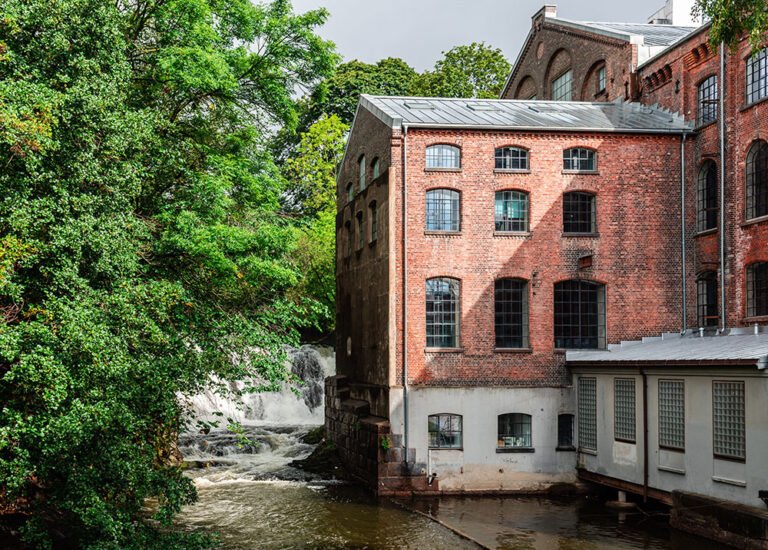
The full waterside path from Maridalsvannet lake to Grønland is 8km long but it links many roads and other pedestrian paths. So, it's easy to take a short stroll along any one particular section.
Along the way you'll see a different side to Oslo. Historic industrial buildings, forested areas, waterfalls and parkland are just some of the highlights along the route.
My recommendation is to take the T-Bane to the modern business neighbourhood Nydalen. Walking back along the river towards the city centre from there should take approximately 45 minutes to Grünerløkka and a full hour to Grønland.
The Streets of Grünerløkka
While passing by Grünerløkka, it's well worth taking a detour to enjoy the architecture and vibrant street life of the district. And to stop for a coffee at the Tim Wendelboe espresso bar, of course!
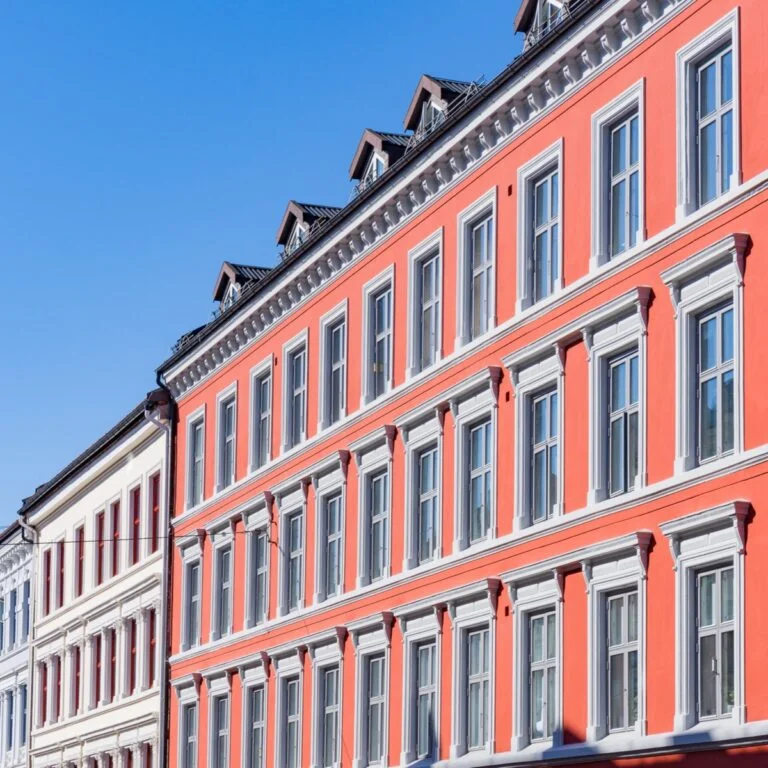
Trams trundle along the main streets, people relax on the grassy squares, locals and tourists shop side-by-side, and cafes and restaurants spill out onto the pavements. There's plenty to see–and photograph–in Grünerløkka.
Oslo Opera House
Since its opening in 2008, the Oslo Opera House has become a true icon of Scandinavia. Like many places on this list, the building itself provides many photo opportunities, as does the view from the roof.
The angled exterior covered with Italian marble and white granite is eye-catching to say the least.
The Snøhetta-designed building won two architecture awards and is equally as intriguing inside—although photos inside the building are generally frowned upon.
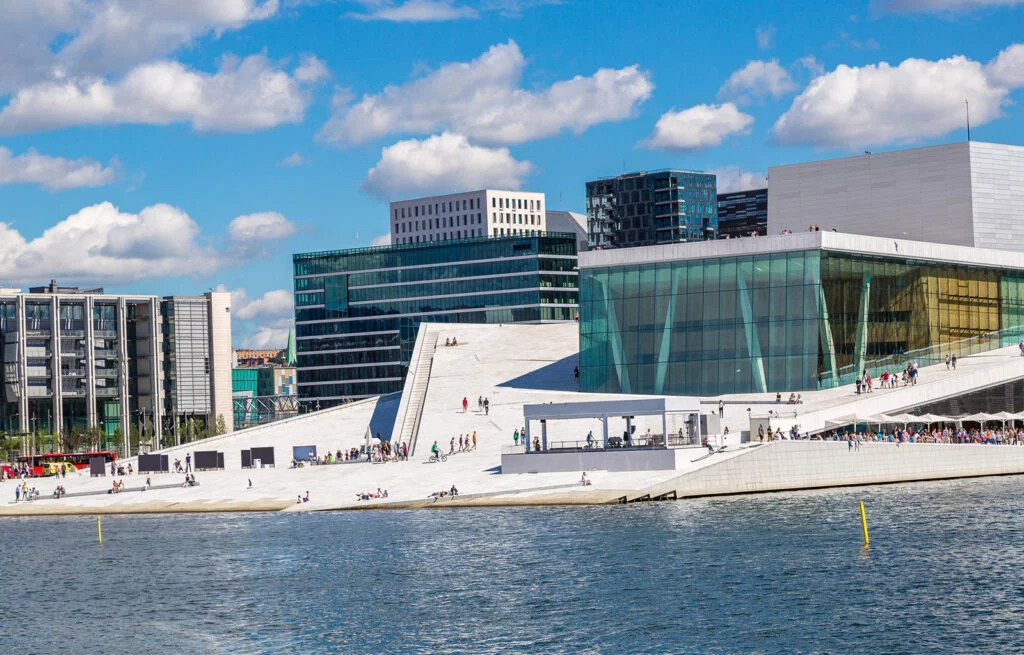
Visitors simply walk up the angled sides to reach the roof. From here, visitors are treated to a view of this ever-changing waterfront region of Oslo, including the Barcode business district, new Oslo library, the apartments and seawater pool at Sørenga, the Munch museum and the Oslofjord.
The Islands of the Oslofjord
Another of my favourite things to do in Oslo is to take the public ferries out to one of the islands. Hovedøya is one of the best for photographers and just five minutes by boat from the pier in front of Oslo city hall.
Despite an area of just 400 square metres, Hovedøya is home to many photogenic attractions.
They include monastery ruins, a small cafe, an old military storage facility, cannon batteries, a Victorian house, beaches and forested areas.
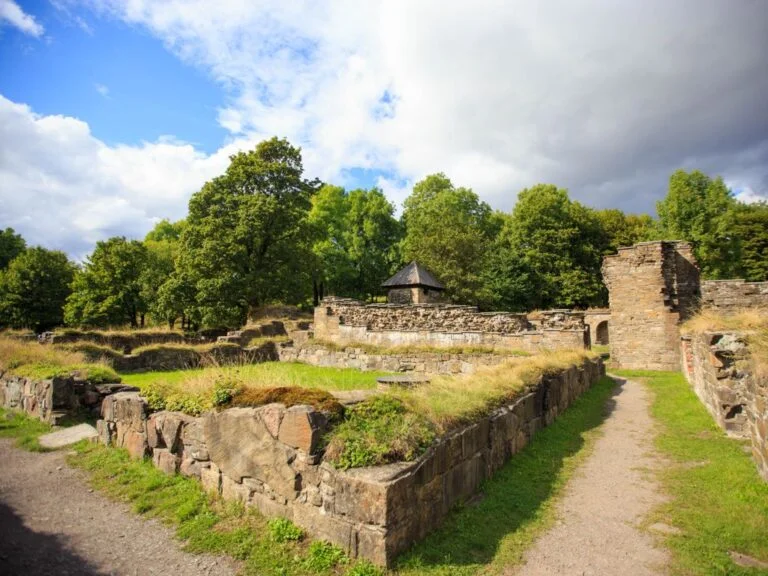
Lindøya island has a very different feel. It's home to a number of colourful holiday cottages used by residents of Oslo during the summer. Seaplanes used to serve this island and the neighbouring Gressholmen.
No matter which island you choose, there are plenty of opportunities for photos both on the islands and back towards the city.
Damstredet & Telthusbakken
Tucked away in central Oslo near the Old Aker Church, these two streets are lined with 18th- and 19th-century wooden houses.
Both streets are protected, meaning the facades and environment must stay intact, but the houses can be and have been modernised on the inside. Many are bigger than they may seem.
The cobbled lanes, colourful façades, and seasonal flowers (especially in spring and summer) create a timeless, village-like atmosphere right in the heart of the city. Great for architectural and lifestyle shots with a historical twist.

Want more? Kjærlighetsstien, literally ‘the love trail', is a narrow path that runs from Telthusbakken down to Fredensborgveien, with charming gardens on both sides.
St. Hanshaugen Park Viewpoint
Often overlooked in favour of Ekeberg or Holmenkollen, this hilltop park near Grünerløkka offers panoramic views towards central Oslo, especially photogenic in the late afternoon.
It’s a great spot to capture Oslo’s skyline with the fjord in the background, framed by trees or the occasional café scene in the foreground.
You can reach the park on foot with a gentle uphill walk from the city centre. The vibrant neighbourhoods of St. Hanshaugen and Bislett feature local cafés, bakeries, and independent shops worth exploring before or after your photoshoot.
Bislett Stadium (Outer Facade)
While in the area, check out the iconic sports arena that served as the centrepiece of the 1952 Oslo Winter Olympics, and is particularly appealing to fans of brutalist and sports architecture.
While not as photogenic inside unless there’s an event, the outside of this stadium—especially the curved concrete and distinctive Olympic flame sculpture—provides an unusual and lesser-known photographic subject.

Today, Bislett hosts international athletics at the annual Bislett Games, as well as home matches for Oslo football club Lyn, keeping the venue firmly rooted in the city’s sporting life.
Tjuvholmen Sculpture Park & Astrup Fearnley Museum
At the far end of Aker Brygge, the sleek development of Tjuvholmen brings together modern art and bold architecture on the waterfront.
The Astrup Fearnley Museum's sail-shaped roof and the surrounding outdoor sculptures provide striking compositions, especially at sunset when the light reflects off the glass and water.
The area is a showcase of contemporary design, with angular buildings, clean lines, and surprising pops of colour that make for compelling urban shots. Just behind the museum, a small stony beach offers a chance to capture Oslo’s relaxed summer atmosphere against a backdrop of cutting-edge architecture.
Oslo Central Station’s Tiger Sculpture
Located on Jernbanetorget outside the main entrance to Oslo Central Station (Oslo S), the giant bronze tiger has become a quirky urban symbol of the capital city.
The statue was a gift from Eiendomsspar to the city in 2000, marking Oslo’s 1,000-year anniversary. The tiger itself is a playful nod to Oslo’s nickname Tigerstaden (The Tiger City), which originated from a poem by Bjørnstjerne Bjørnson describing the city as wild and dangerous like a tiger.
Capturing it with trams, crowds, or street performers in the background offers a dynamic, fast-paced city vibe. It's perfect for street photography or playing with motion blur.
I hope these nine ideas get you started! Where's your favourite place for taking photos in Oslo?

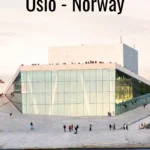

I just love Norway and its heritage. Hoping to visit Fjords one day and cash a fish from fresh waters of this lovely, peaceful and HAPPY COUNTRY!!!
At the end of T-bane Line 3 one can easily hike to Kolsas Toppen that has a nice view over the area. There is also Grefsen Kollen as well which has a very nice view. One of the nicer places is also Semsvannet a lake in Asker it has a hike around the lake and the reflections of the foliage on the water can be really nice in the fall. The lake Sognsvann has nice views and many hikes around the area but also has a lighted trail around it and its really nice views as well.